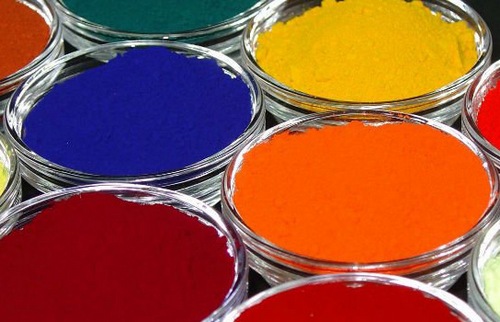Different Types of Dyestuffs in Relation to the Fiber Substrate
Different Types of Dyestuffs in Relation to the Fiber Substrate
Different Types of Dyestuffs in Relation to the Fiber Substrate
Rana Sohel
Executive Engineer
Sunman Textile Mills Ltd. Chittagong
Cell: +8801912-420118
Email: rsohel07tex@gmail.com
Executive Engineer
Sunman Textile Mills Ltd. Chittagong
Cell: +8801912-420118
Email: rsohel07tex@gmail.com
Dyestuff:
The desire to color textiles is an old as spinning and weaving. Natural coloring materials have been used for thousands of years; mineral pigments such as yellow and red ochre, cinnabar; vegetable dyes such as indigo, litmus, logwood, madder, saffron; animal dyes such as cochineal, Tyrian purple. Synthetic dyes were first produced in the 19 century and have now almost completely replaced the natural colors. Environmental and product safety aspects are currently very important.
 |
| Various Dyestuff |
Different types of Dyestuffs in relation to the fiber substrate:
- Reactive Dye: Applicable for cotton, linen, viscose, wool, silk. The dyestuff forms a chemical Iink with the fibre. It has very good fastness properties.
- Disperse Dye: Applicable for polyester, nylon, acetate. It is water in soluble; applied' from dispersions; diffuse into the fibre at high temperature. It has also good fastness properties.
- Vat Dye: Applicable for cotton, linen, viscose. The insoluble dyestuff is made soluble in a reducing vat so that it can diffuse into the fibre. After diffusion is complete, it is then re-oxidised into its in soluble form. It has high fastness to washing, chlorine, boiling, light, weather, rubbing and perspiration.
- Direct Dye: Applicable for cotton, linen, viscose, silk. Simple diffusion into the fibre, from aqueous solution. It has relatively poor fastness properties to light, washing and perspiration. These fastness properties can be improved by after treatment.
- Basic Dye: It is suitable for acrylic fibres (other fibres by mordanting). It reacts with acidic groups, or mordants (a chemical which can react or complex with a chromophore to form an insoluble colour) in the fibre. It has good fastness properties on acrylic fibres.
- Acid Dye: Applicable for wool, silk, nylon. Applied from an acidic dyebath. The fastness properties of this dye-stuff depends on the fibre type.






No comments